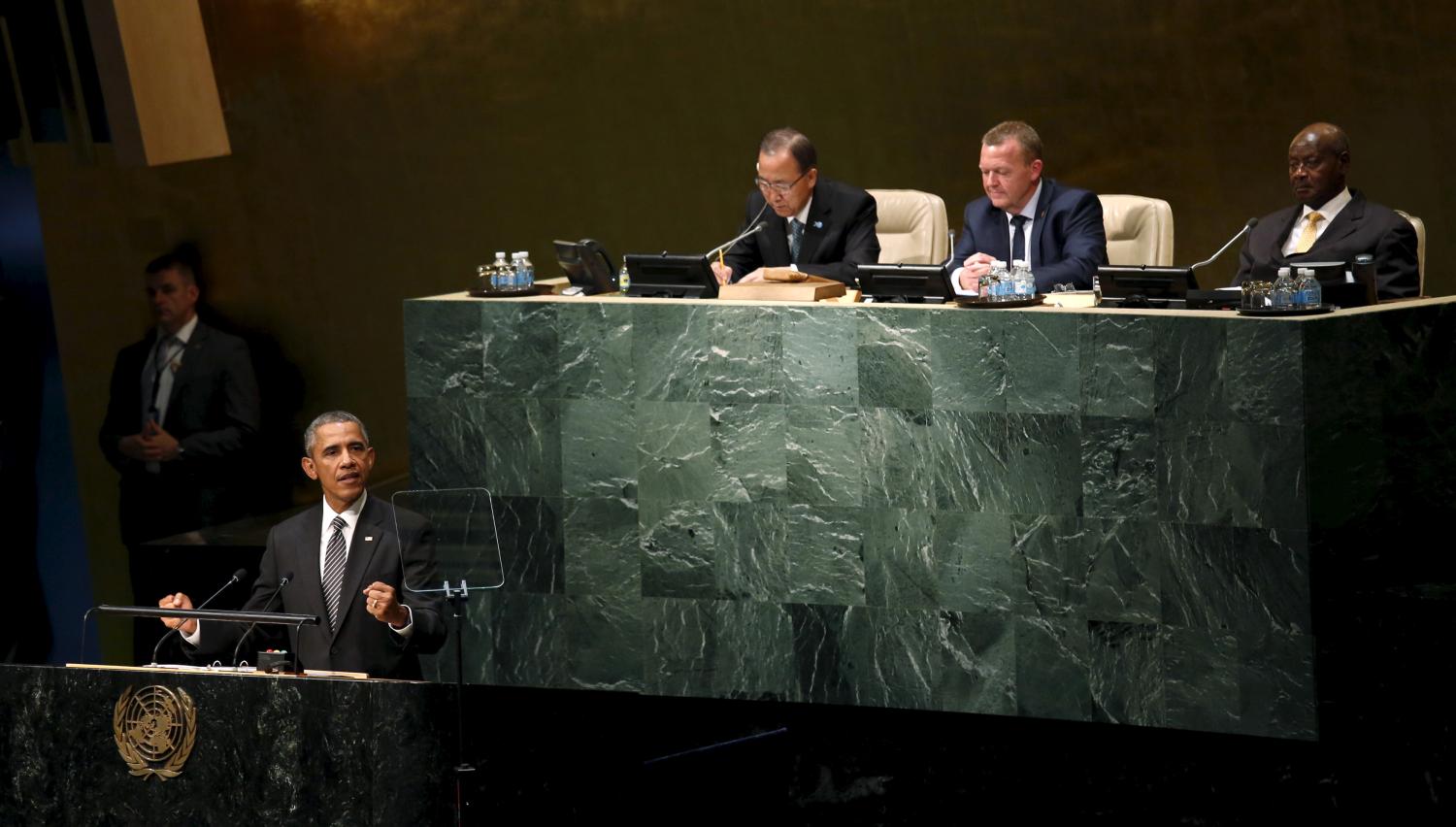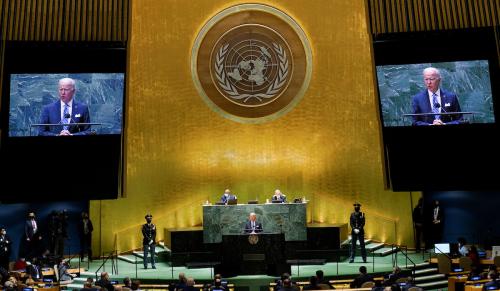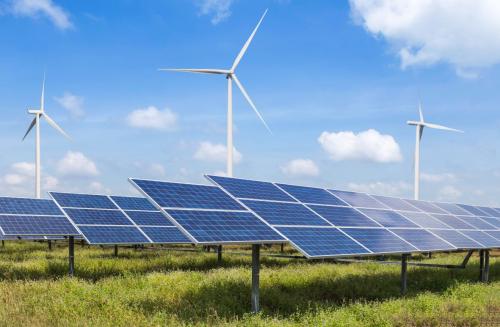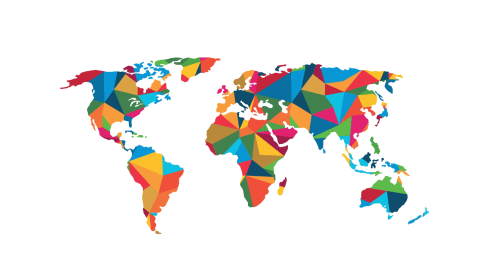This essay is part of “The SDG second half: Ideas for doing things differently.”
In September 2015, in stirring remarks at the United Nations, President Barack Obama unequivocally committed the United States to achieve the Sustainable Development Goals (SDGs). The U.S. government had played a critical role in shaping the agenda and in generating substantial international support. Yet the U.S. government has been mostly missing in action ever since. A clear, official recommitment to the SDGs by the U.S., manifested by a set of concrete, practical actions, would be an important catalyst in reigniting global progress on Agenda 2030.
Select Biden administration officials have embraced the goals, primarily for foreign policy purposes: For example, the SDGs were mentioned in the recently released National Security Strategy. But integration of the SDGs into global and domestic policy initiatives is unmistakably inconsistent, even where they are significantly aligned. The SDGs were wholly absent, for example, from the president’s recent summit committing to end hunger in the U.S. by 2030—i.e., SDG 2.
Fortunately, the U.S. government has much to leverage, due to leadership that has emanated from numerous segments of American society over the past seven years. Many U.S. cities, states, universities, businesses, philanthropic foundations, and youth organizations have been at the forefront of demonstrating innovation and commitment. Initiatives such as the administration’s action plan on climate change and its implementation of the executive order on advancing racial equity clearly reflect the objectives of the SDGs.
Three major commitments would signal a renewal of American leadership on the SDGs and help drive global action and progress:
- Issue a Voluntary National Review (VNR) in 2024 and 2028. Countries use VNRs to communicate their progress on the SDGs and outline their plans for accelerating their efforts both nationally and globally. Only five U.N. member states have not submitted nor have committed to release a single VNR: Haiti, Myanmar, South Sudan, Yemen, and the U.S. By the end of this year, most countries that the U.S considers peers will have issued multiple VNRs.
An American VNR could integrate the innovations already advanced at local and state levels such as the Voluntary Local Reviews issued by New York, Pittsburgh, and Orlando; data dashboards created by Los Angeles and Hawaii Green Growth; and the Voluntary University Reviews issued by Carnegie Mellon. A VNR would also highlight the importance young people place on this framework as well as analyze how the implementation of the legislative agenda approved in the Infrastructure Investment and Jobs Act, the CHIPs and Science Act, and the Inflation Reduction Act will all contribute to progress. - Establish a cabinet-level interagency group responsible for SDG implementation. A serious commitment will require a whole-of-government approach, given the SDGs pertain to domestic as well as global priorities and include interdependencies that cut across departments and agencies. The U.S. could model the bureaucratic structure in place to combat human trafficking and modern slavery, which includes the President’s Interagency Task Force and the Senior Policy Operating Group.1
- Integrate SDG standards into signature initiatives. Departments and agencies should explicitly align their key domestic and global initiatives—such as the president’s campaign to end hunger by 2030; the U.S. strategy on countering corruption; and the president’s Summit for Democracy—to the SDGs and use SDG standards and metrics to rigorously measure their contributions to national and global progress. Executive branch reports to Congress on numerous initiatives ought to do the same.
A Basis for Hope
During much of the first half of the Millennium Development Goal era from 2000 to 2015, the U.S. remained on the sidelines. The tone shifted through formal and explicit commitments in 2009, and its leadership was central to accelerating progress on several fronts, such as maternal health, child survival, and smallholder agriculture, before 2015. A similar opportunity awaits the U.S. at this halfway point to 2030. At the core of the SDGs is the concept that the well-being of all citizens is interconnected. Attending to the well-being of all Americans—rural and urban, young and old, no matter where they sit on the political spectrum—will require bipartisan leadership and help make democracy stronger in the U.S. and worldwide. A unified recommitment to the SDGs would be a major step toward advancing U.S. interests, both at home and abroad.
-
Footnotes
- Note also that targets and indicators to combat human trafficking appear in several different SDGs and ought to be reflected in the annual Trafficking in Persons Report to Congress.





